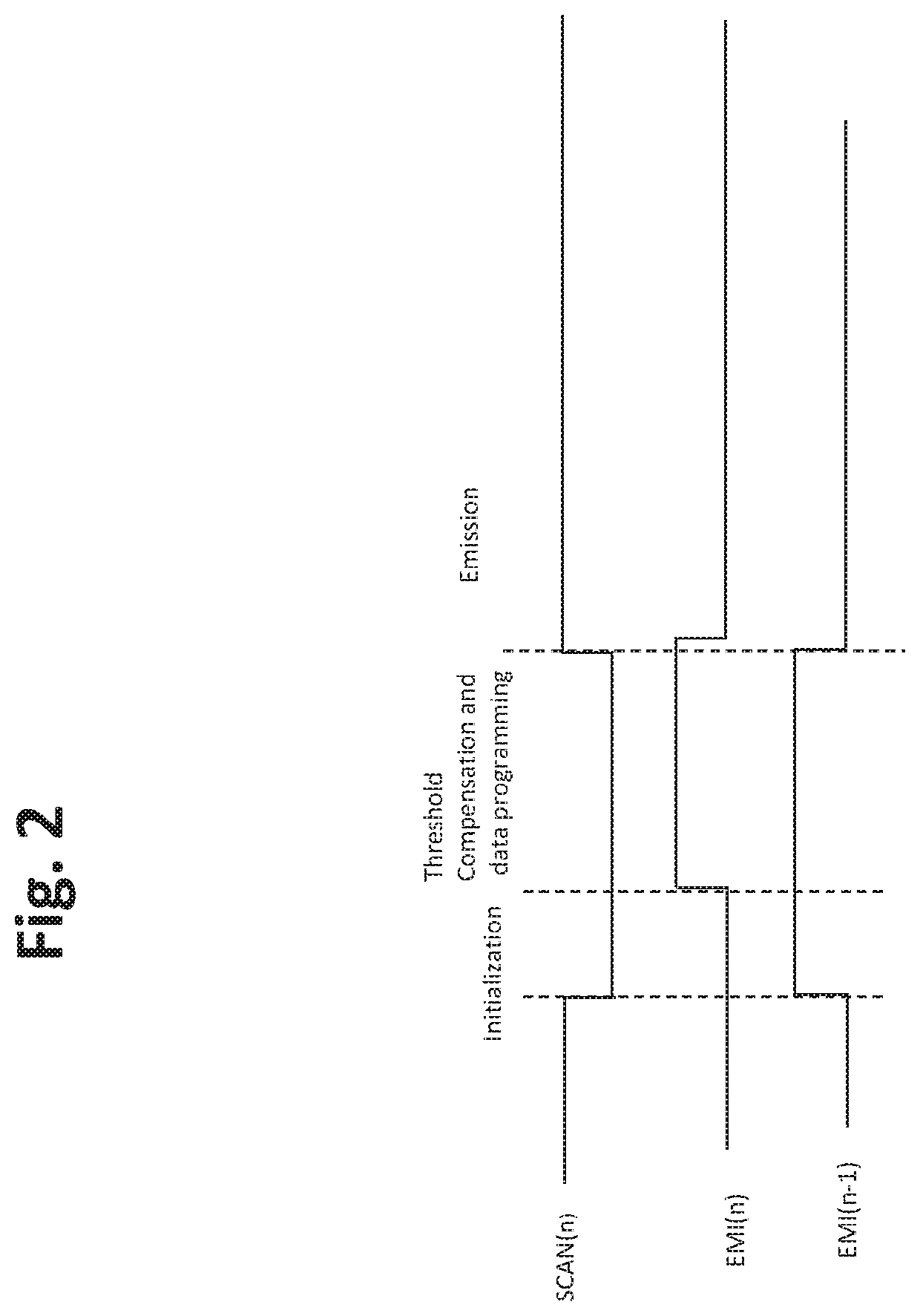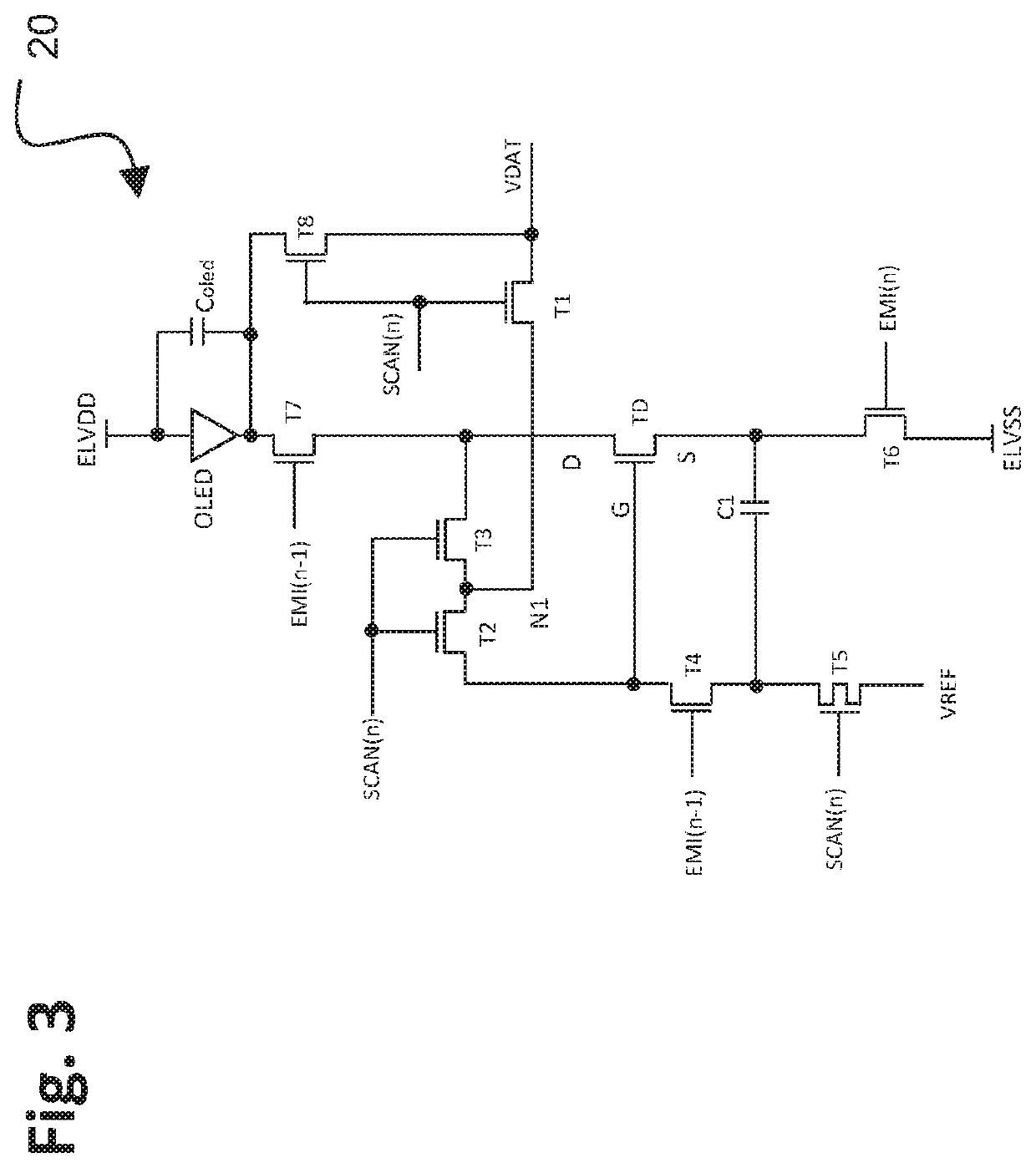TFT pixel threshold voltage compensation circuit with data programming from drain of the drive TFT
a technology of data programming and threshold voltage, applied in the direction of instruments, static indicating devices, etc., can solve the problems of residual voltage affecting the true black state, pixel brightness may not be uniform for a given vdat value, and performance degradation by memory effects from previous frame data, so as to achieve less impact on performance
- Summary
- Abstract
- Description
- Claims
- Application Information
AI Technical Summary
Benefits of technology
Problems solved by technology
Method used
Image
Examples
first embodiment
[0029]As illustrated in the timing diagram of FIG. 2, in this first embodiment, during the previous emission phase the EMI(n) and EMI(n−1) signal levels have a low voltage value, so transistors T4, T6, and T7 are in an on state, and light emission is being driven by the input driving voltage ELVDD connected by a power supply line to the drive transistor TD, whereby the actual current applied to the OLED is determined by the voltage at the gate and the source of the drive transistor. The SCAN(n) signal levels for the applicable rows initially have a high voltage value so switch transistors T1, T2, T3, T5, and T8 are in an off state.
[0030]At the beginning of the initialization phase, the EMI(n−1) signal level is changed from a low voltage level to a high voltage level, causing the transistors T4 and T7 to be placed in the off state. The capacitor C1 has a first plate connected to switch transistors T4 and T5, and a second plate connected to a first terminal or source of the drive tran...
second embodiment
[0044]The control signal levels depicted in the timing diagram of FIG. 4 are basically comparable to the control signal levels depicted in the timing diagram of FIG. 2, except modified as warranted for the operation of n-type transistors rather than p-type transistors. In this second embodiment, during the previous emission phase, the EMI(n) and EMI(n−1) signal levels have a high voltage value, so transistors T4, T6, and T7 are in an on state, and light emission is being driven by the input driving voltage ELVSS connected to the drive transistor TD, whereby the actual current applied to the OLED is determined by the voltage at the gate and the source of the drive transistor. The SCAN(n) signal levels for the applicable rows initially have a low voltage value so transistors T1, T2, T3, T5, and T8 are in an off state.
[0045]Referring to the TFT circuit 20 of FIG. 3 in combination with the timing diagram of FIG. 4, similarly as the previous embodiment the TFT circuit 20 operates to perf...
PUM
 Login to view more
Login to view more Abstract
Description
Claims
Application Information
 Login to view more
Login to view more - R&D Engineer
- R&D Manager
- IP Professional
- Industry Leading Data Capabilities
- Powerful AI technology
- Patent DNA Extraction
Browse by: Latest US Patents, China's latest patents, Technical Efficacy Thesaurus, Application Domain, Technology Topic.
© 2024 PatSnap. All rights reserved.Legal|Privacy policy|Modern Slavery Act Transparency Statement|Sitemap



